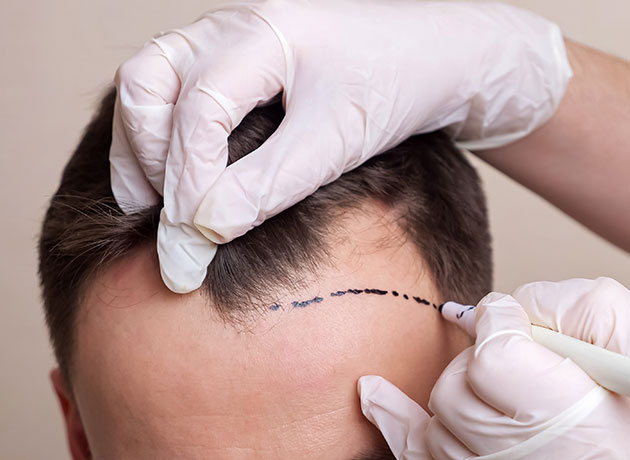


If you're worried about hairlines or thinning hair affecting your confidence, get in touch with Medical Hair Transplant and Aesthetics (MHTA). Our baldness treatment looks after natural regrowth for both men and women. We go beyond superficial solutions to deliver personalized, effective results using advanced techniques and cutting-edge technology.
Our team of experts conducts a thorough scalp and hair assessment, uncovering the root causes of your hair loss. With this insight, we create a customized hair restoration plan. Our treatments also tackle underlying factors such as nutritional deficiencies, metabolic issues, hormonal imbalances, and the impact of stress on hair health. With us, you regain confidence and embrace a head of thick, luxurious locks.

Baldness treatment can be ideal and advantageous for patients:
At Medical Hair Transplant and Aesthetics, we pride ourselves on being the premier destination for baldness treatment in San Francisco and Los Gatos. We emphasize trust, quality, and remarkable results across all our services. Our surgeon, Dr. John Diep, has exceptional credentials, expertise, and proven track records in performing baldness treatments for both men and women with the highest precision and success rates.
We ensure the most natural-looking and long-lasting results using state-of-the-art techniques and advanced technologies, such as Follicular Unit Extraction (FUE) and Follicular Unit Transplantation (FUT). Our commitment to delivering personalized care and maintaining the highest patient satisfaction standards makes us preferable for hair loss or baldness treatment. With our remarkable legacy and vast clientele, you can rely on us for consistent and outstanding outcomes in your baldness treatment.
Schedule Your Free ConsultationWhile restoring thicker, healthier hair, our baldness treatment provides significant benefits, including:
We treat your baldness with oral medications or minimally invasive FUE/FUT hair transplant surgery. So, you don’t need to experience any pain/discomfort and a lengthy recovery period.
As our hair transplants involve careful extraction and precise grafting of hair follicles on the balding/thinning area, the results will look natural.
As we identify and treat the root cause of your hair loss, even the dormant hair follicles will grow hairs, resolving your problem from the inside out.
We tailor our baldness treatment to every patient, addressing their specific hair loss reasons and restoration goals.
Are you looking for effective solutions to treat your baldness or thinning hairlines? Look no further than Medical Hair Transplant and Aesthetics Book a free consultation today!
Free ConsultationIt depends on the type of hair loss you have. While hair loss caused by medical conditions and stress can be treated, hair loss resulting from cicatricial alopecia is permanent.
Balding treatments, including medications (finasteride (Propecia) and Minoxidil (Rogaine)) and surgery (FUE/FUT), are FDA-approved and considered to be effective as they have shown positive reactions in combating balding.
Balding treatments are FDA-approved, minimally invasive, and have the least risk of scarring and side effects, so it is considered safe.